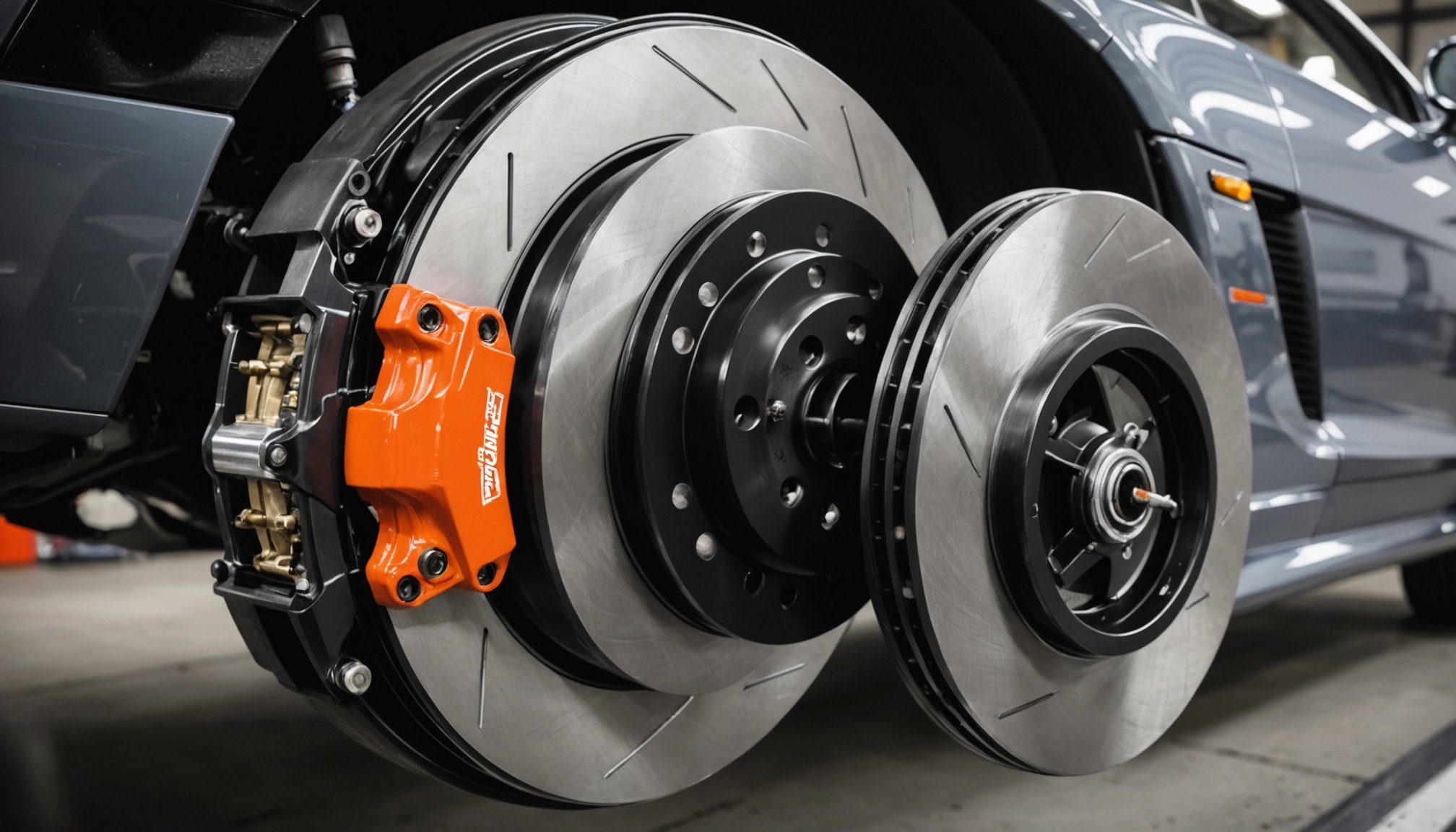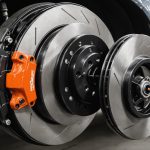Maintenance Techniques for High-Performance Brakes
Proper brake maintenance is crucial for the optimal performance of high-performance and sports cars. Regular inspection schedules are essential for detecting brake wear early. By adhering to a consistent inspection routine, car owners can ensure that brakes operate efficiently, preventing sudden failures that could compromise safety.
Cleaning brake components is another vital aspect of performance enhancement. Over time, debris can accumulate on brake parts, leading to reduced efficiency and increased wear. Regular cleaning helps remove this buildup, ensuring that the brakes function at their best. This simple maintenance step is effective in prolonging the life of the brake system.
This might interest you : Ultimate guide to brake fluid replacement: a comprehensive step-by-step approach for uk car enthusiasts
Fluid replacement is equally important in maintaining high-performance braking. Brake fluid absorbs moisture over time, which can lead to a spongy brake pedal feel and reduced braking efficiency. Replacing the brake fluid at recommended intervals ensures that it maintains its performance characteristics, providing reliable stopping power when you need it most.
For those caring for a sports car, these maintenance practices are essential. Whether you are an enthusiast aiming for peak performance enhancement or someone seeking to extend the service life of your brakes, attention to these details will improve both safety and driving enjoyment.
Also to see : The complete handbook: get your uk car ready for an unforgettable track day adventure
Recommended Upgrades for Longevity
In the realm of brake upgrades for high-performance cars, choosing the right components is crucial. Performance brake pads, distinguished for their enhanced friction material, offer significant durability enhancements. These pads ensure better heat handling, reducing the chances of brake fade during intensive use.
When it comes to rotors, the debate between slotted vs. drilled rotors is prominent. Slotted rotors are designed to channel away debris and gases, enhancing consistent braking performance. In contrast, drilled rotors allow for increased heat dissipation, particularly beneficial in wet conditions or for cooling during aggressive driving. Both types offer unique high-performance parts, and choice often depends on driving style and environmental conditions.
Additionally, evaluating different brake fluid types is essential for optimal performance. High-performance fluids, typically with higher boiling points, withstand the intense heat generated during high-speed braking. This minimizes the risk of vapor lock, ensuring reliable stopping power. Opting for fluids specifically designed for high-performance applications can significantly enhance a car’s braking capability.
These strategic upgrades not only enhance the longevity of the braking system but also improve overall vehicle control. Investing in quality components tailored for performance can substantially benefit any sports car care routine.
Environmental Considerations in the UK
Driving conditions in the UK present unique challenges for brake performance. The frequent wet weather significantly impacts braking systems by reducing grip and increasing stopping distances. In such conditions, maintaining optimal brake efficiency becomes crucial. It’s essential to ensure that brake components remain in prime condition to handle these environmental demands effectively.
Road conditions in the UK are another factor considerably affecting brake lifespan. Potholes, uneven surfaces, and debris contribute to accelerated wear and tear on the braking system. By regularly inspecting and maintaining brake components, drivers can mitigate potential damage and prolong component life, ensuring that their brakes remain reliable in fluctuating conditions.
Salty winter roads in the UK pose yet another challenge, fostering corrosion on critical brake parts. To combat this, regular cleaning and application of protective coatings can help minimize the adverse effects of salt exposure. These proactive measures can significantly enhance the durability and functionality of brakes, regardless of the harshness of the environment.
Understanding and addressing these environmental factors allows UK drivers to operate their vehicles with confidence, ensuring braking systems remain responsive and effective under diverse and demanding conditions.
Material Comparisons for Optimal Performance
Brake materials play a crucial role in determining the efficiency and lifespan of a vehicle’s braking system. The choice between ceramic and metallic brake pads can notably influence performance. Ceramic pads are renowned for their quiet operation and reduced dust production, making them a popular choice for daily drivers. However, metallic pads offer superior stopping power under extreme conditions, proving advantageous for sports and racing applications.
Different rotor materials further affect a car’s braking dynamics. Traditional cast iron rotors are favored for their affordability and durability. Modern options include composite rotors, which combine the properties of carbon fiber and ceramics for enhanced high-performance characteristics. These materials enable quicker heat dissipation, improving fade resistance during high-speed braking.
Understanding these pad comparisons and rotor material trade-offs is essential in optimizing vehicle handling. Choosing the appropriate materials can enhance not only stopping power but also affect the overall balance and agility of the vehicle.
As automotive technology advances, drivers have more options to tailor brake maintenance and performance to their specific needs, ensuring that each component works harmoniously to deliver the expected driving experience.
Expert Insights and Case Studies
Gain valuable expert advice for optimising your braking system. Performance brake specialists advocate consistent maintenance and selecting appropriate materials to ensure maximum efficiency. An interview revealed that the choice between ceramic and metallic brake pads should align with usage. Ceramic pads, known for quieter operation, suit daily driving, whereas metallic pads demonstrate better endurance for high-stress scenarios.
Moreover, consider case studies from UK sports car enthusiasts who successfully extended brake lifespan through strategic upgrades. A notable case involved a driver adopting slotted rotors and high-quality fluid, enhancing braking reliability under wet UK conditions. Such adjustments have proven effective in managing frequent environmental challenges.
Analysing common braking issues provides further insights. High-performance vehicle owners often face problems like brake fade and corrosion. By addressing these with enhanced rotors and protective measures, significant improvements can be achieved in braking performance.
Understanding and implementing these practices can transform sports car care, reducing wear and enhancing safety. Engaging with expert insights and real-world experiences endows enthusiasts with the knowledge to tailor their braking systems for enduring and effective performance.











